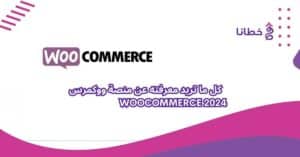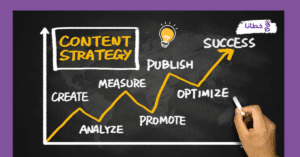table of contents
In the world of digital marketing, content is king. However, not just any content can reign supreme. Content developed according to a well-thought-out strategy aligned with SEO principles. Develop a successful content strategy to achieve your digital marketing goals.
Here are the steps to developing a successful content strategy to achieve your e-marketing goals:
Understanding the target audience:
First and foremost, you must know your audience well. What are their interests? What problems do they face? What questions are they looking for answers to?
Identify keywords:
Use SEO tools to identify the keywords your audience is searching for. Make sure these keywords align with the content you provide.
Create valuable content:
The content you provide should be useful, informative, and entertaining. It should answer your audience’s questions and solve their problems.
Optimize content for search engines:
After creating your content, use SEO rules to optimize it. This includes using keywords naturally in your text, optimizing your titles and descriptions, and creating internal and external links.
Measuring results and continuous improvement:
Use data analysis tools to measure content performance. Which pages attract the most traffic? Which articles generate the highest engagement rates? Use this information to continually improve your strategy. You can read: 10 SEO Strategies for Your Website.
The importance of content strategy to achieve e-marketing goals
A content strategy is the backbone of any successful online marketing campaign. It forms the integrated plan for managing content in all its forms, whether written, visual, or downloadable. By developing a well-thought-out content strategy, businesses can engage and retain customers. It also ensures that the content created is relevant, valuable, and tailored to the needs and preferences of the target market.
- A strong content strategy also contributes to increased traffic.
- Generate leads.
- Increase conversions.
Making it an essential element for online success. In short, ensure you have a comprehensive and innovative strategy that will be the foundation of your online business’s success. It will contribute to achieving your marketing and communication ambitions! Here’s a list of 3 reasons to create strategic content:
1- Improving audience interaction and trust:
- Engaging with your audience through eye contact, active listening, and encouraging questions can create a connection that builds trust.
- Responding thoughtfully to their inquiries and feedback also shows that you value their input, which further enhances engagement.
- So, keep striving to improve these skills to build a strong relationship with your audience.
- Improving audience engagement and trust is essential for effective communication.
2- Increase sales and generate customers:
- Engage with your audience on social media platforms to build relationships and brand loyalty.
- Provide excellent customer service to ensure a positive shopping experience.
- Special discounts to encourage purchases.
- Consider offering promotions.
You can enlist the help of a select group of digital marketing experts to help you achieve your goal of attracting the target audience to your business through Khutana, a leading company you can contact. By focusing on these key areas, you can increase sales and generate repeat customers for your business.
3- Search Engine Optimization (SEO):
Improving your search engine ranking through search engine optimization (SEO) is essential:
- To increase your website visibility.
- Attract more organic traffic.
By optimizing your content with relevant keywords, building high-quality backlinks, and ensuring your website is user-friendly and mobile-responsive, you can climb the search engine results pages. Regularly monitoring your performance, making necessary adjustments, and staying up-to-date with algorithms can help you stay ahead in the competitive online landscape. With dedication and strategic SEO efforts, you can improve your website’s visibility and attract more valuable traffic to your online platform.

Content strategy elements to achieve e-marketing goals
When developing a content strategy, it’s important to consider the various elements needed to create effective and engaging content. Below, we’ll outline 7 essential elements of a successful content strategy.
1- Clear goals and objectives:
Start by defining what you want to achieve with your content strategy.
- Attract more traffic to your website.
- By increasing brand awareness.
- Attract potential customers.
Clearly define your goals and objectives to guide your content creation process.
2- Research the target audience:
Knowing your target audience is key to creating content that resonates with them.
- Conduct thorough research to understand their demographics.
- Their interests.
- Their problems.
This will help you tailor your content to suit their needs and preferences.
3- Keyword research and search engine optimization:
- Conduct keyword research to identify related terms and phrases that your target audience is searching for.
- Incorporating relevant keywords into your content is essential to improving your search engine visibility.
- Optimize your content for search engines, to increase organic traffic to your website.
4- Content evaluation:
Create a content calendar to plan and organize your content creation efforts. This helps you maintain:
- Ensures your content aligns with your overall strategy.
- Fixed posting schedule.
Use tools like spreadsheets or project management software to track deadlines and progress.
5- Create high-quality content:
Focus on creating high-quality, valuable content that educates, entertains, or informs your audience. Make sure your content is well-researched, engaging, and relevant to your target audience. Use a mix of formats such as:
- Blog posts.
- Charts.
- Videos.
- Podcast.
To keep your audience engaged.
6- Promotion and distribution:
Once you’ve created great content, it’s important to promote and distribute it effectively. Use a mix of channels such as:
- Email marketing.
- Social media.
- Impactful partnerships.
To reach a wider audience, engage with your audience by responding to comments and feedback to build relationships.
7- Track and improve performance:
Monitor the performance of your content strategy using analytics tools to measure key metrics like:
- Website traffic.
- Participation rates.
- Transfers.
Use data to identify what’s working well and what could be improved. Continuously refine your content strategy based on insights to achieve even better results. Incorporating these essential elements into your content strategy will help you create engaging, valuable content that resonates with your target audience and advances your business goals. You can read: The Impact of Social Media on Digital Marketing.
The most important tools for building a content creation strategy to achieve e-marketing goals.
- Keyword research tools: such as Google Keyword Planner and SEMrush, to identify the most effective keywords.
- Graphic design tools: such as Canva and Adobe Spark, to create images and graphics that enhance content.
- Search Engine Optimization (SEO) tools: such as Moz and Ahrefs, to improve the appearance of content in search results.
- Social analytics tools: such as BuzzSumo, to analyze social media performance.
- Content marketing tools: such as HubSpot and Contently, to manage and distribute content.
- Audience analysis tools: such as Google Analytics, to understand visitor behavior and preferences.
- Editorial calendar tools: such as Trello and Asana, to plan and organize your content schedule.
- Content Management Platforms (CMS): such as WordPress, for publishing and organizing content.
These tools help with every step of content creation and distribution, from research and planning to publishing and analysis, ensuring you get the most out of your content creation efforts.
How to continuously develop and improve your content strategy to achieve your e-marketing goals.
To continuously develop and improve your content strategy.
1- Set clear goals:
Set specific, measurable goals for your content strategy, whether it’s increasing website traffic, engagement, or conversions.
- Adjust it regularly based on performance data and feedback.
- Review your goals.
2- Create high-quality content:
Focus on producing high-quality, relevant content that provides value to your target audience. Experiment with different formats, such as:
- Blog posts.
- Charts.
- Videos.
To keep your content fresh and engaging.
3- Research and Analysis:
Conduct regular research on industry trends, audience preferences, and competitor strategies. Use analytics tools:
- To track the performance of your content.
- Identify areas for improvement.
4- Cross-channel promotion:
Use a variety of channels, including:
- Email marketing.
- Social media.
- Partnerships.
To promote your content and reach a wider audience, tailor your messaging and tactics to each platform to maximize engagement and conversions.
5- Measurement and repetition:
Continuously monitor the performance of your content strategy with metrics like:
- Number of visits.
- Transfers.
- Participation.
Use A/B testing and data analysis to determine what works best, and make data-driven decisions to improve and optimize your strategy.
6- Be informed and innovative:
Keeping up with industry trends, new technologies, and emerging platforms to stay ahead of the curve, try:
- Strategies.
- Formats.
- ideas.
New ways to innovate your content and differentiate it from competitors. By following these guidelines and regularly improving your content strategy based on feedback and data, you can continually develop and improve the effectiveness of your content marketing efforts.
Effective tips when starting a content creation strategy
When starting a content creation strategy, it’s important to keep the following tips in mind to ensure you produce engaging and effective content:
- Search Engine Optimization (SEO): Use keywords strategically and make sure your content follows SEO best practices to increase visibility.
- Write unique and original content: Avoid copying and pasting from other sources. Look for fresh angles and innovative ideas for your topics.
- Use calls to action (CTA): Encourage readers to take specific steps after reading the content.
- Diversify platforms: Think about how to deliver content across different platforms, from blogs to video and podcasts.
- Integrate multimedia: Use images, videos, and graphics to make your content more engaging.
- Write compelling titles: Use titles that grab attention and encourage the reader to continue reading.
- Add value in every sentence: Make sure every piece of content provides value to the reader.
- Proper editing: Carefully review content to correct linguistic and informational errors.
In addition to these tips, it’s also important to identify your target audience and understand their needs and preferences to deliver content that meets their expectations. Don’t forget to analyze the results and adapt to changes to continually improve your strategy. Share your questions and suggestions with us on developing a successful content strategy to achieve your 2025 digital marketing goals.
Questions about the article: Developing a Successful Content Strategy to Achieve Your Digital Marketing Goals 2025
How to develop a content marketing strategy?
Analyze your competitors’ content and marketing strategy.
Improve your SEO practices.
Design a content-centric customer journey.
Create content marketing personas.
Develop a content production process.
Check your content library.
Define your content goals.
Measure the success of your content.
What is a content strategy for marketers?
A content strategy is a strategic approach to creating, managing, and distributing content. It involves planning and implementing a roadmap for creating, distributing, and optimizing content.
What is an example of a content strategy?
A common example of a content strategy is implementing blog and hub design best practices. Optimizing blogs is crucial for more users to access your site and increase overall traffic. It’s also a great way to plan development ideas to improve the user experience.
What is content marketing with example?
Content marketing is the process of creating and distributing digital materials, such as blog posts, videos, e-books, whitepapers, solution briefs, and a variety of other digital content, to inform your audience. Content marketing is essential to search engine optimization (SEO) success.
What is the benefit of using a brand story?
Many marketers use brand storytelling to communicate their purpose and build a community around their brand that consumers can join. Using brand storytelling in this way can foster customer loyalty, increase brand awareness, and increase sales.
We respect and value your time... half an hour to grow your project
































